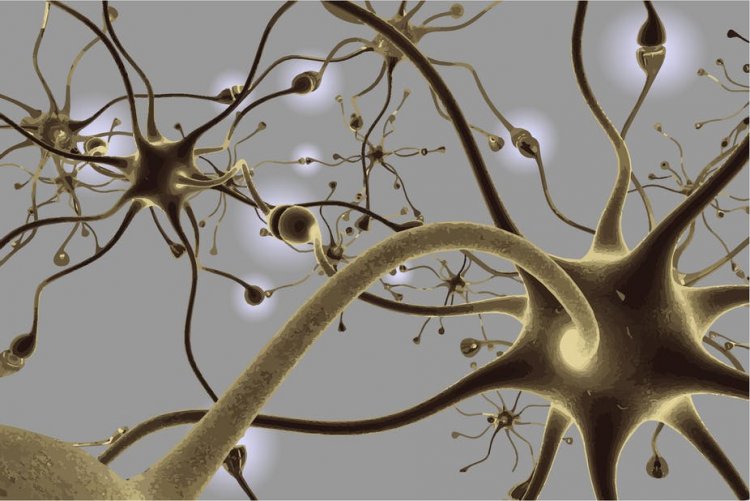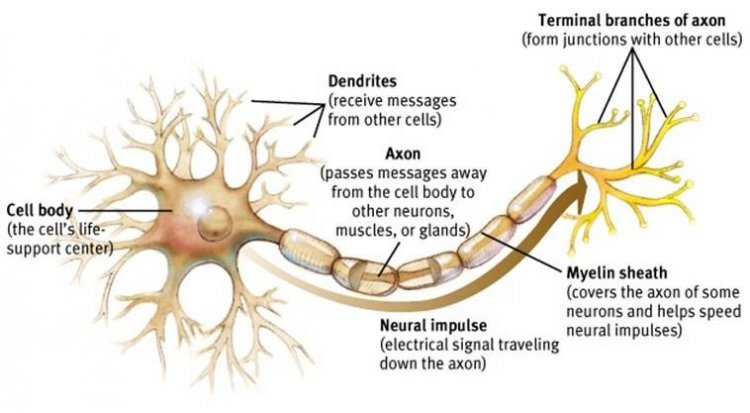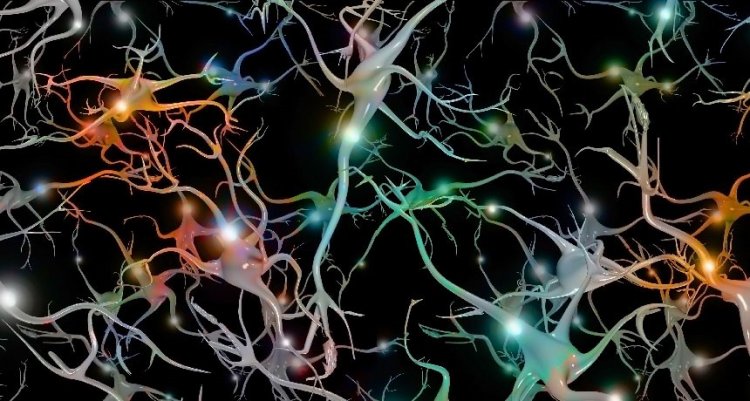The perfect Design of Nervous System Part 4
The Cables that Surround Our Bodies

Dr. Bahez Mohammed Salih Mahmud
Dendrites and Axons: The Cables that Surround Our Bodies
Dendrites consist of a large number of short protrusions and are comparable to the roots of the cell. With their branched structure, dendrites receive reports arriving from other neurons and transmit these to the cell body. Put another way, dendrites are like electrical cables, transmitting signals entering the cell. Every neuron possesses up to 100,000 branching dendrites that carry incoming messages to the cell.
The axons generally bring information from sensory receptors to the brain and spinal cord or transmit commands back to the muscles, glands, and internal organs. An axon is a long fiber, generally consisting of a single protrusion, that emerges from the cell body and along which signals are sent. Individual axons are microscopic in diameter typically about one micrometer across - but may extend to macroscopic (>1mm) lengths. The longest axons in the human body, for example, are those of the sciatic nerve, which runs from the base of the spine to the big toe of each foot. These single-cell fibers of the sciatic nerve may extend a meter or even longer.

Another striking feature is that a single axon is capable of dividing itself into as many as 10,000 terminals or end sections. In this way, each terminal can be connected to a different neuron and can permit more than one region to be stimulated at the same time. Since any one single neuron can receive signals from more than 1,000 other neurons, it can carry a million different pieces of information at the same time —an incredible figure. This ability plays a very important role in situations wherein more than one muscle fiber needs to be activated. With these structures, each nerve cell appears like a dense network consisting of long chains. If the nerves did not have such a structure, then every signal would have to be transmitted in turn. That would slow and seriously impair the rapid, complex transfer of signals in the body.
We can compare the axon terminals at the end of dendrites to plugs fitting into sockets. Thus, in the same way, that an electrical current flows from the socket to the plug, the electrical signal continues between two nerve cells. These connection points at the axons’ ends are attached to receptors on other cells and permit information to transmit between cells. In the way they allow communication between different points in the nervous system, axons are comparable to the links connecting one part of an electrical circuit to another. Each of these features is essential for our bodies’ communication and coordination. Our ability to lead healthy lives and our very existence depend on all these details functioning flawlessly.

One of the aims behind their creation is to exhibit the knowledge and artistry of our Lord. Ours is the responsibility to appreciate the greatness of our Lord and give proper thanks:
. . . Allah pours out His favor on mankind but most people do not show thanks. That is Allah, your Lord, the Creator of everything. There is no god but Him—so how have you been perverted? (Surah Ghafir: 61-62).
Dr. Sue Davidson, Ben Morgan, Human Body Revealed, Dorling Kindersley Ltd., 2002, p. 11.
Book.Clinical NEUROANATOMY.RICHARD S.Snell





